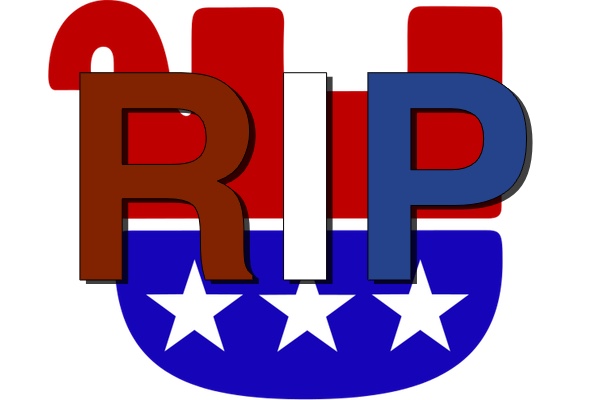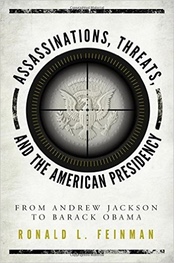The GOP Is Dying

The year 2016 marks the 162nd anniversary of the birth of the Republican Party in Ripon, Wisconsin on March 20, with the first statewide convention being in Jackson, Michigan on July 6, 1854, in opposition to the passage of the Kansas Nebraska Act, permitting expansion of slavery into new territories.
 The
Republican Party may survive long term in some form on the state
level, but not as a national party able to compete on the
Presidential level, as the nomination of Donald Trump marks the death
knell of the party in its ability to control the executive branch of
government, and to influence the federal judiciary in the long term.
For large percentages of many groups—women, Latinos and Hispanics,
African Americans, Asian Americans, millennials, labor,
environmentalists, cities and suburbia, gays and lesbians, Atlantic
and Pacific coasts, upper Midwest—the Republican Party is anathema
for the long haul. Its main appeal is now to those living in the
rural South, Great Plains and Mountain West, with the Southern
influence being ironic, since this was where the original Republican
Party was unpopular.
The
Republican Party may survive long term in some form on the state
level, but not as a national party able to compete on the
Presidential level, as the nomination of Donald Trump marks the death
knell of the party in its ability to control the executive branch of
government, and to influence the federal judiciary in the long term.
For large percentages of many groups—women, Latinos and Hispanics,
African Americans, Asian Americans, millennials, labor,
environmentalists, cities and suburbia, gays and lesbians, Atlantic
and Pacific coasts, upper Midwest—the Republican Party is anathema
for the long haul. Its main appeal is now to those living in the
rural South, Great Plains and Mountain West, with the Southern
influence being ironic, since this was where the original Republican
Party was unpopular.
It is appropriate to look back and assess the Republican Party history, and it is a story of glory, tragedy, accomplishments, and failures. It is a history of great Presidential and Congressional leadership, but also of massive corruption and truly horrible leadership, and of Presidents who destroyed their party’s image and legacy. It is a party which at times spoke up for the majority view, but then lost its way and went into rapid decline, only holding off the inevitable fall through the intervention of the Supreme Court in the election year of 2000. It was inevitable after the party lost all integrity and principle in the first fifteen years of the 21st century.
So first, the positive side of the party history. Abraham Lincoln, through the throes of the Civil War and much hated by many, demonstrated what great presidential leadership and courage is all about. Radical Republican leaders, including Thaddeus Stevens and Charles Sumner, stood up for racial equality and the Civil Rights Amendments numbers 13, 14 and 15. Mugwump Republicans led by Carl Schurz and others stood for civil service reform to end government corruption, and James A. Garfield offered the possibility of a real reform President in the Gilded Age, before he was tragically assassinated in 1881, just months into his term.
Then the Republicans were fortunate to have Theodore Roosevelt, who ushered in the Progressive Era, with the assistance in Congress of such luminaries as Robert La Follette, Sr , George Norris and others. It was Republicans who were the major reformers of the early 20th century, although Democrat Woodrow Wilson adopted many of the proposals of TR’s Bull Moose Progressives in 1912.
In the 1920s, the Republican Party returned to its traditional Gilded Age philosophy. When the Great Depression destroyed the presidency of Herbert Hoover, the GOP, which had been the majority party in voter registration since the Civil War, became a minority party. But elements of progressive Republicanism survived during the New Deal with Robert La Follette, Jr, George Norris, Hiram Johnson and others. In the 1950s, 1960s, and 1970s, liberal Republicans still found a place in the party, including Nelson Rockefeller, the titular leader of the so-called Eastern Establishment, and others including William Scranton and George Romney, as well as a group of liberal Republicans in the US Senate and House of Representatives.
The low points in Republican history began in the Gilded Age with extensive corruption occurring, particularly, in the Presidency of Ulysses S. Grant, and with Congressional leaders including Roscoe Conkling and James G. Blaine promoting the spoils system. This era was one of truly weak Presidents, with only Garfield, briefly, seeming to offer an alternative that quickly was lost. Then the 1920s witnessed even more extensive corruption under Warren G. Harding, widely judged the worst President in American history since the Civil War era, leading to the complete collapse of the American economy by the end of the 1920s under Herbert Hoover. Despite their resulting minority party registration status, there was a revival under Dwight D. Eisenhower in the 1950s. But then we observed the corruption and abuse of power under Richard Nixon, a truly flawed man, exemplified by the Watergate scandal.
The Ronald Reagan era in the 1980s was marked by the triumph of conservatism, but the party remained in the minority. The roots of the GOP’s collapse as a national party began ironically with a great triumph in 1995, its control of Congress for the first time in 40 years. After that came the histrionic and hypocritical impeachment of President Bill Clinton, the flawed election of George W. Bush (aided by a compliant Supreme Court), the failure to anticipate 9-11, the attack on Iraq under false pretenses, and the collapse of the economy.
The Republican Party in recent times has only kept power in Congress because of gerrymandered House districts (particularly in the South, the Great Plains, the Mountain West and some Rust Belt states) and implacable opposition to the Obama administration, which helped Republicans in rural Tea Party states win a majority in the Senate. The country as a whole is becoming more urban and multicultural, but the GOP is increasingly the party of older white males.
Now Donald Trump, with his fascist type appeal, has hijacked the Republican Party—the presidential party of Lincoln, TR, and Ike, the Congressional party of Stevens, Sumner, Schurz, La Follette Jr. and Sr., Norris, and the national party of Rockefeller, Scranton and Romney (in short, the party of antislavery, Radical Republicans, Mugwump Republicans, Progressive Republicans, and Liberal Republicans)—and made it unrecognizable.